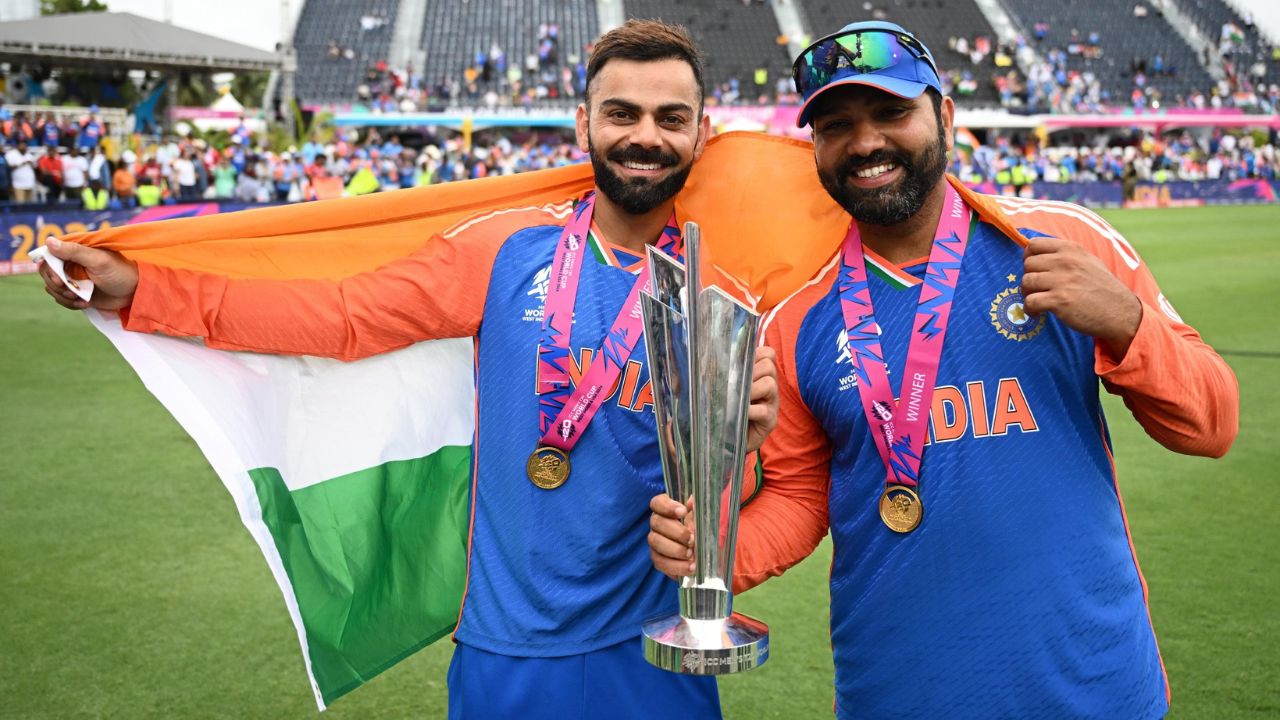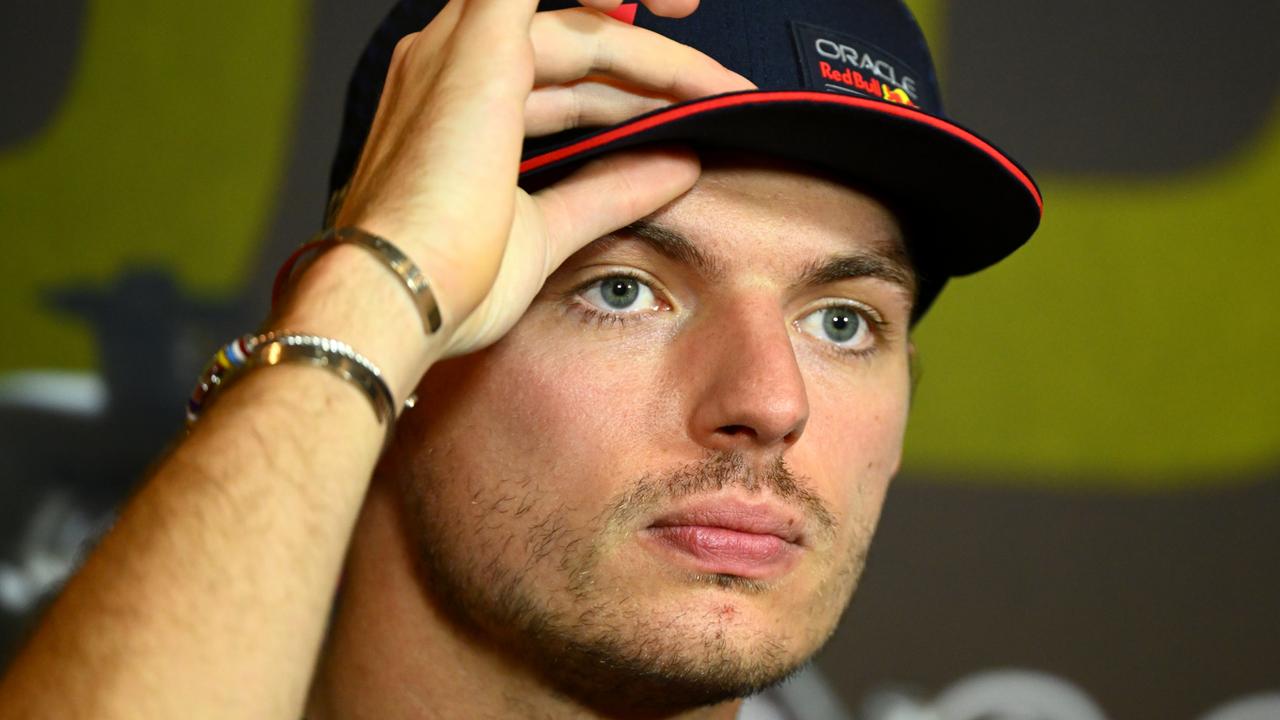Can anyone catch Red Bull Racing?
That’s the question that will exercise minds among the nine chasing teams during the off-season as the clock counts down to preseason testing and the first race of 2024.
The gap to the front is significant, but as Aston Martin and McLaren proved this year, big steps can be made suddenly.
Stream over 50 sports live and on demand with Kayo. Join now and start streaming instantly >
There was a sense, even if it was only small, that some of Red Bull Racing’s pursuers were closing down their deficits late in the year.
McLaren’s gains were particularly heartening, taking the Woking team from the back of the pack in the opening rounds into regular podium contention in July. The difference was as stark as switching on a light.
By the final month of the campaign Lando Norris, in spectacular form, was challenging Max Verstappen for victory at the São Paulo Grand Prix. The MCL60 had the pace but not the tyre life to go the distance in that fight, but for one afternoon the goal seemed within reach.
McLaren has the advantage too of not needing to revolutionise its car — it’s already done that, at least aerodynamically.
Its off-season will be defined by changes to broaden the set-up window and improve some of the mechanical behaviours of the car that leave Norris and Oscar Piastri needing to drive in a very particular way to get the best out of a machine whose demands so befuddled Daniel Ricciardo.
If you don’t fancy McLaren’s chances, perhaps Ferrari is more to your liking.
The Italian team has often exuded basket-vase vibes, especially late last year, when it decided the team principal that made it Red Bull Racing’s closest challenger in 2022 needed to be let go.
But new boss Frédéric Vasseur has steadied the ship, and though the year started badly, the end of the campaign was very strong. Charles Leclerc took three pole positions in four races and didn’t qualify off the front row in the last five events. He would have won in Las Vegas had it not been for the badly timed safety car.
Ferrari exuded something a little different at the end of this season: optimism. Out of the Scuderia, Mercedes and Aston Martin, it was the Italian team that had the most solid understanding of how its car was working and what it needed to change for next year.
While Mercedes spent the entire year not understanding what was wrong with its car for the second year running — certainly cause for concern for next year — and Aston Martin slipped forever backwards, Ferrari actually seemed to have things figured out.
It sets up a potentially fascinating fight at the front next season.
It’s not just on-track matters that will keep minds occupied in the coming months, with much to be decided off track in 2024.
In the coming days two teams will announce name chances.
AlphaTauri will be rebranded, with speculation suggesting the Red Bull-owned team will be renamed Racing Bulls.
Alfa Romeo will cease its sponsorship of the Sauber team, which enters a two-year transition phase before Audi completes its buyout in 2026. Expectations are that it will revert to its historic Sauber branding, but de facto team principal Alessandro Alunni Bravi said he expects the team’s name to “be a surprise”.
Answers will be revealed on the 2024 entry list on 10 December.
And then there’s the driver market. With 70 per cent of the grid out of contract and the wheeling and dealing starting earlier every year, things could get messy heading into the new year.
Verstappen wins 19th race in record year | 01:52
AERO CHANGES TO EQUALISE THE FIELD
Those chasing teams have one small advantage: F1’s equalisation measures.
Formula 1 restricts the amount of time teams can spend testing new parts based on their championship position.
The more competitive you’ve been in the last six months, the less time you get in the wind tunnel and using computational fluid dynamics software for simulated testing.
Inversely, the lower ranked teams are allowed more time for research and development to help them catch up.
Allowances are decided every six months, at the end of June and the end of December.
Each position is worth a little over 7 per cent more testing time relative to Red Bull Racing.
Ferrari, McLaren, Williams and AlphaTauri will all lose development time from 1 January because of their gains in the constructors championship since the Austrian Grand Prix — the first race to which McLaren brought its first major upgrade.
Aston Martin, Alpine, Alfa Romeo and Haas will all gain time for having lost their way since July.
Aerodynamic testing restrictions, 1 January to 30 June 2024
1. Red Bull Racing (no change): 224 wind tunnel runs, 1400 CFD hours
2. Mercedes (no change): 7.14 per cent more than Red Bull Racing
3. Ferrari (up one): 14.29 per cent more
4. McLaren (up two): 21.43 per cent more
5. Aston Martin (down two): 28.57 per cent more
6. Alpine (down one): 35.71 per cent more
7. Williams (up two): 42.86 per cent more
8. AlphaTauri (up two): 50 per cent more
9. Alfa Romeo (down two): 57.14 per cent more
10. Haas (down two): 64.29 per cent more — 368 wind tunnel runs, 2300 CFD hours
Kostecki crowned driver’s driver of 2023 | 00:54
ENTRY FEES RISE TO NEW HEIGHTS
The cost of entering next year’s championship has skyrocketed, with entry fees rising 6.5 per cent compared to last year.
The entry fee is paid in US dollars, and the FIA pegs the annual increase to the US consumer price index, which was 6.5 per cent for the 2023 season.
Each team is liable for a flat entry fee of US$657,837 (A$999,912). They’re then charged an additional fee per point scored in the previous season.
The world champion — Red Bull Racing in this case — is charged US$7893 (A$11,997) per point. Every other team pays US$6575 (A$9994) per point.
Costs have been converted to from US to Australian dollars, with US$1 buying A$1.52.
Teams
1. Red Bull Racing: $11.32 million (860 points)
2. Mercedes: $5.09 million (409 points)
3. Ferrari: $5.06 million (406 points)
4. McLaren: $4.02 million (302 points)
5. Aston Martin: $3.80 million (280 points)
6. Alpine: $2.20 million (120 points)
7. Williams: $1.28 million (28 points)
8. AlphaTauri: $1.25 million (25 points)
9. Alfa Romeo: $1.16 million (16 points)
10. Haas: $1.12 million (12 points)
‘The stewards are a joke man!’ | 02:36
Drivers are also up for entry costs via their annual super licence renewal fee.
The fees are not made public, but last year drivers were charged a base fee of €10,400 (A$17,056) and then slugged €2100 (A$3444) per point scored in the previous season.
Unlike the team entry fee, which rises regularly each year, the super licence fee has bounced around in the last decade. It was charged at approximately this rate in 2009 — when drivers were scoring far fewer points under the old points structure — before being cut in 2010.
Autosport has reported that the fee per point scored jumped 30 per cent to its current rate for 2023.
Red Bull-owned Speedweek has reported the fee will remain unchanged for 2024.
In that case the cost of Verstappen’s third title defence will come in at almost $2 million.
Fortunately for the Dutchman, driver contracts often stipulate that teams pick up the super licence bill.
Super licence fees are charged in euros, with €1 buying A$1.64.
Drivers
1. Max Verstappen: $1,997,356 (575 points)
2. Sergio Pérez: $998,596 (285 points)
3. Lewis Hamilton: $822,952 (234 points)
4. Fernando Alonso: $726,520 (206 points)
5. Charles Leclerc: $726,520 (206 points)
6. Lando Norris: $723,076 (205 points)
7. Carlos Sainz: $705,856 (200 points)
8. George Russell: $619,756 (175 points)
9. Oscar Piastri: $351,124 (97 points)
10. Lance Stroll: $271,912 (74 points)
11. Pierre Gasly: $230,584 (62 points)
12. Esteban Ocon: $216,808 (58 points)
13. Alexander Albon: $110,044 (27 points)
14. Yuki Tsunoda: $75,604 (17 points)
15. Valtteri Bottas: $51,496 (10 points)
16. Nico Hülkenberg: $48,052 (9 points)
17. Daniel Ricciardo: $37,720 (6 points)
18. Zhou Guanyu: $37,720 (6 points)
19. Kevin Magnussen: $27,388 (3 points)
20. Logan Sargeant: $20,500 (1 point)
Terrifying crash decides MotoGP title | 01:42
DRIVERS OUT OF CONTRACT
The 2024 season is set to be the first in Formula 1 history that starts with exactly the same teams and drivers that ended the previous campaign.
Notwithstanding impending name changes for AlphaTauri and Alfa Romeo, all 10 teams will field unchanged driver line-ups.
In part that reflects Nyck de Vries making it only 10 rounds before being axed in favour of Daniel Ricciardo, who was otherwise targeting a 2024 return.
But there are also other factors at play.
Lower ranked teams are in less need to hire pay drivers to pay the bills, meaning there’s less churn at the back of the grid as driver sponsors inevitably lose patience funding middling results.
That also means fewer teams are folding and exiting the sport, with their drivers then disrupting other team line-ups.
That in turn is reflected in the fact the 20-driver field is pretty strong. It’s difficult to argue that any of the drivers outright don’t deserve a place in the sport, even if you could equally argue several teams might be better placed giving a locked-out rookie a crack.
Fortunately for those who have been locked out — Aussie Jack Doohan among them — 14 drivers, or 70 per cent of the field, are out of contract in 2024, which could set the sport up for a frenetic silly season.
Red Bull Racing: Sergio Pérez
Sergio Pérez’s struggles at Red Bull Racing have been well canvassed. Christian Horner says it’s his seat to lose, but he’s also been open about the fact Daniel Ricciardo is lined up to replace the Mexican should he falter. It will take more than Pérez’s middling end to the year and a typical early-season victory or two next year to convince.
Ferrari: Charles Leclerc and Carlos Sainz
Italian media have reported that a new five-year contract for Charles Leclerc is as good as signed, but the team is holding out on Carlos Sainz. The Spaniard wants at least two years but Ferrari is reportedly willing to offer only one to keep its options open, with Lewis Hamilton, George Russell and Lando Norris all out of contract at the end of 2025.
Aston Martin: Fernando Alonso and Lance Stroll
Fernando Alonso reckons he was in career-best form in 2023, and Aston Martin’s big leap will have piqued his interest in a contract extension — so long as the growing calendar doesn’t burn him out. Lance Stroll is on a perpetual deal as the owner’s son and therefore isn’t out of contract per se, but surely he can’t survive another thrashing.
Kostecki crowned Supercars Championship | 03:25
Alpine: Pierre Gasly and Esteban Ocon
Pierre Gasly landed an early blow on new teammate Esteban Ocon this year, beating the established Alpine driver in their first campaign together, even if by only small margins. The battle is on to be noticed at 2023’s most anonymous team and to stave off any sudden moves by management to shake things up.
Williams: Alex Albon and Logan Sargeant
Alex Albon has become hot property after a tremendous season in the back-of-the-grid Williams machine, single-handedly taking the team to seventh in the standings. He could be the curve ball in the drive market. Logan Sargeant will have to show some big improvement and much greater consistency to avoid being replaced at the end of the season.
AlphaTauri: Yuki Tsunoda and Daniel Ricciardo
In what could be the most interesting intrateam battle of the year, Daniel Ricciardo will be fighting to prove he has what it takes to replace Sergio Pérez in 2025 — or potentially sooner — by leading AlphaTauri up the grid. The same opportunity is theoretically open to Yuki Tsunoda too, with the Japanese driver’s career hinging on how he does relative to the Australian.
Alfa Romeo: Zhou Guanyu
Zhou Guanyu has acquitted himself perfectly well but is battling to keep himself relevant ahead of Audi’s looming takeover. Audi doesn’t have say over drivers yet, but the Sauber operation may like to bring in a talismanic driver a year early, in 2025, so that the team can hit the ground running under the new rules in 2026.
Haas: Nico Hülkenberg and Kevin Magnussen
Nico Hülkenberg impressed against incumbent Kevin Magnussen this year, but no amount of experience between this pair could have save Haas from its dismal season. It’s difficult to imagine any other driver on the grid wanting to drive for the American team in its current state, and with principal Guenther Steiner preferring not to field rookies, the status quo seems like an obvious choice.







